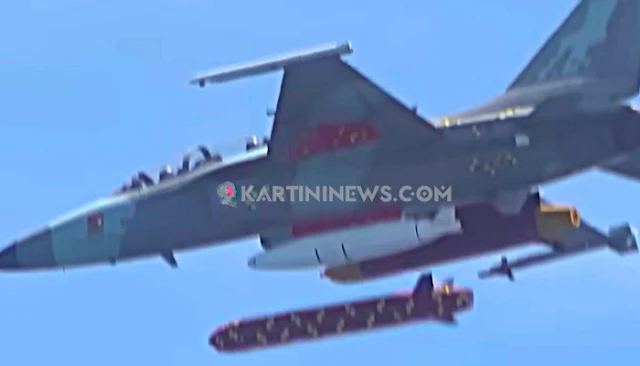South Korea Successfully Tests New Guided Missile to Provide Stealth Deep-Strike Capability to KF-21 Fighter Jets
The Defense Acquisition Program Administration (DAPA) of South Korea declared on June 25, 2025, that a long-range air-to-surface guided missile that was created domestically and intended to be installed into the KF-21 Boramae fighter jet had successfully completed a safe separation flight test. The test, which was carried out by the 3rd Fighter Wing of the Republic of Korea Air Force on an FA-50 platform, demonstrates Seoul's advancement in deploying precise deep-strike capabilities utilizing domestic equipment. This milestone boosts South Korea's domestic fighter program's export potential as well as national defense, according to Bemil Chosun and other Korean defense sources. It also marks a change in modern air-delivered weapons toward strategic autonomy.
The core of South Korea's second-phase strike weapons program is the domestically produced long-range air-to-surface guided missile, which was introduced to provide a precision-guided standoff weapon with great lethality and stealth capabilities. The missile, which was developed using only South Korean technology, has a reduced radar signature, GPS and inertial navigation, and a terrain-following flight profile. The recent test confirmed aerodynamic stability, structural clearance, and basic flight safety—all crucial stages toward integration with the KF-21—by safely releasing an inert missile from an FA-50 test aircraft. This missile is not yet officially named, however it is frequently referred to informally as the "Korean Taurus."
The long-range missile program was started in 2018 and proceeded through exploratory development from 2019 to 2021, verifying important characteristics such autonomous guidance and stealth shape. Under the auspices of the Agency for Defense Development (ADD), full-scale development commenced in 2022, with DAPA supervising operational feasibility testing. 31 flying sorties were conducted over three months, from April to June 2025, to assess aircraft flutter, control stability, and missile separation safety. A significant obstacle to operational usage was removed with the last test flight, which confirmed that the missile could separate cleanly from the airplane without compromising its structure or onboard equipment.
The domestically produced missile has better modularity, newer digital subsystems, and locally tailored design elements than legacy weapons like the German Taurus KEPD 350, which is now installed on South Korea's F-15K fighter planes. It is anticipated that its ultimate integration with the KF-21 platform would produce a strike package that is smaller, more flexible, and requires less maintenance. The missile enables complete native manufacturing control, which is crucial in reducing the risks associated with export limitations or geopolitical conflicts, in contrast to imported systems. Though conceptually similar to France's SCALP-EG or the UK's Storm Shadow, the missile is being modified to meet the unique requirements of South Korea's defensive posture and topography.
There are important strategic ramifications. The missile supports a rapid-response posture in line with alliance operations in the Indo-Pacific and enhances South Korea's deterrent capabilities regionally by allowing targeted attacks on valuable enemy infrastructure early in a war. The missile's international coupling with the KF-21 advances South Korea's aspirations to become a major defense supplier. Purchasing a fighter that is already equipped with a striking weapon made in the country might be beneficial for prospective purchasers looking for turnkey airpower options. Furthermore, the platform is compatible with future AI-enhanced capabilities and improved avionics, which is in line with new NATO and Indo-Pacific operating doctrines.
As part of a larger €3.9 billion investment in next-generation air combat systems, DAPA has allocated about €1.1 billion to the present development phase. The missile's inclusion in the KF-21 export roadmap indicates potential future bundling prospects, even though it has not yet been contracted for international sales. Once the system is fully operational, nations like Indonesia, a co-developer of the KF-21, and other ASEAN or NATO allies could express interest. With first operational capability aimed before 2030, more test flights, including live-fire assessments and system integration on KF-21 prototypes, are planned starting in 2027.
More than just a new weapon, South Korea's in-house-developed long-range air-to-surface guided missile marks a significant advancement in the country's capabilities to launch a strike. Its successful test represents a significant milestone in the nation's endeavor to combine its first domestic fighter aircraft with indigenous missile technology to produce a potent, export-ready combo. The system strengthens national security and increases South Korea's reputation as a provider of cutting-edge precision attack platforms on the international military scene as Seoul approaches complete operational integration. (Red)

